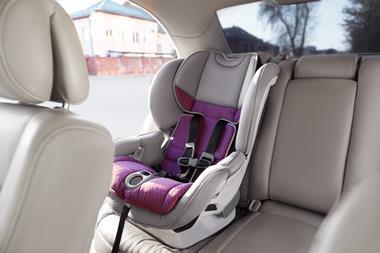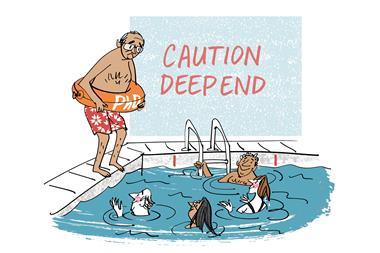Your health and safety advisor is not your personal stylist

I’m not usually someone you would come to for advice on what to wear. I discovered the walking shirt and chinos combo in 2009 and haven’t looked back since. Yet every year, people come to me seeking my expert sartorial advice on one particular matter. ‘Can I wear shorts in the lab?’
As the university’s chemistry safety advisor, it often falls to me to field this clothing question when the summer sun rolls around. You see, most of the UK’s ageing chemistry buildings were not designed for high temperatures, but for the cold, grey drizzle that usually pervades our misty island. For readers outside of the UK it is worth noting that air conditioning is still a rarity here.
The answer, of course, is ‘no’. But don’t be lured in by the apparent simplicity of the question. After the initial reply the complexity increases exponentially. What about a skirt? What about sandals? What about Crocs (shudder)? What about tight-fitting trousers, jeans or V-neck T-shirts? What are my opinions on the relative safety of every item on the tights–leggings–yoga pants spectrum?
I feel compelled to give an answer – after all, personal protective equipment (PPE) generally assumes you are wearing complementary clothing. Yet while I have strong opinions about various types of PPE – indeed, the PPE section of my chemistry safety course carries a rant warning at the start of it – where do I begin with clothing?
PPE sits firmly at the bottom of the hierarchy of safety control measures for laboratories. The first acronym I learned to describe this hierarchy (and therefore the one that is permanently ingrained into my brain) is ESREP: elimination, substitution, reduction, engineering controls (for example, fume cupboards) – and finally PPE. Sometimes additional elements such as administrative controls (training, processes and experience) get inserted above PPE.
Each element of the hierarchy is more effective at keeping people safe than the one below it. A fume cupboard protects you whether you are wearing PPE or not; using less of a harmful chemical protects everyone in the room – and if you substitute that chemical with a non-hazardous alternative, your sense of security is real rather than false.
The humble lab coat and safety glasses are so ubiquitous in chemistry labs that it is easy to forget that they only protect you if you have already been hit by the chemical. Once you factor in that items of PPE may be uncomfortable or may not fit properly (a problem for women scientists in particular), and can end up simply not being worn at all, they start to look increasingly ineffective. But despite being at the bottom of the hierarchy it is still part of the system – it’s just that all of the others are better.
It could be argued that clothing is part of your PPE. What it lacks is coherent standards. A lab coat must be made from certain materials that offer a minimum level of protection, whereas trousers can be made from anything from linen to leather, which offer vastly different levels of protection. And shorts, concealed entirely beneath your lab coat, offer no protection at all.
When falling into this black hole of garment safety speculation I am always rescued by a phrase used by a colleague: we are not the fashion police. In the UK we are fortunate to have comprehensive safety legislation. This includes the requirement for workers to not only keep themselves and others safe but also to cooperate with their employers.
So what do I reply? Do a risk assessment. Work out what you are trying to mitigate and act accordingly. Don’t forget there are others working in the lab, so you have to account for what they are up to as well. Do this, and you will probably get your safety controls about right.
There’s another reason why I don’t like to set rules about what to wear. By being too draconian or arbitrary, I might lead someone into taking the wrong attitude to health and safety. In the grand scheme of things, clothing violations are pretty minor. I want people to engage with safety in their work and not get caught up with petty bureaucratic arguments. That said, if you do ask the direct question I will still say ‘no shorts’.












No comments yet